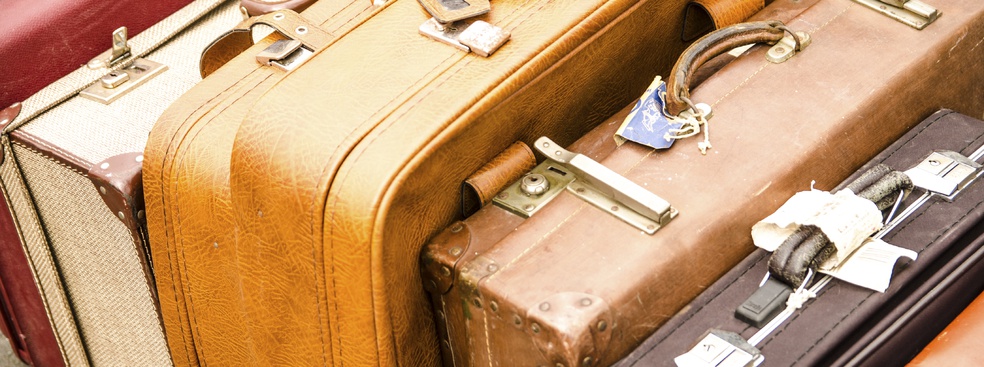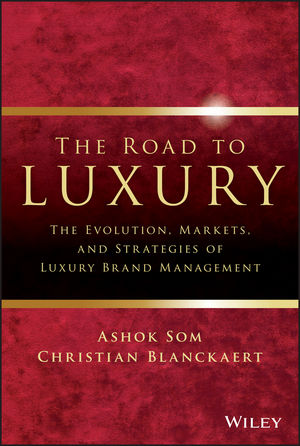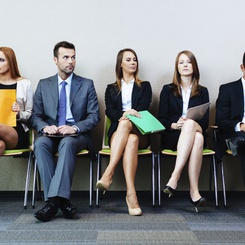Mobile, connected and global: business people, travelers and tourists are forming an ever-increasing market of nomadic consumers. Prof. Ashok Som explores this unprecedented path to luxury and the questions of where to catch the luxury nomads, what to offer them and how to seduce them into buying.
___
The luxury world is a very intimate one. A world that begins when our dreams and desires are sparked by the visual beauty of a luxury item or service, the promise of a perfume that connects us to something beyond the tangible and touches the sense of the spiritual, or a deep feeling of comfort, uniqueness and well-being that is conjured up by the magic of a luxury environment.
But step out of that intimacy and look at the world and you will notice that it is fast-moving, sometimes solitary and still very vast. Observe the last twenty years and you will notice that movement is very much a master of our lives. That not so long ago we stayed many years in the same place, the same company and in the same job and that for many, taking the plane was indeed a luxury in itself.
The world is becoming nomadic. The digital revolution combined with the democratization of air travel has rendered us more mobile than ever. We telecommute, we now communicate via applications from almost any point in the world; we practise hot-desking, work with a nomad office and fly the miles to take weekends away, visit the supplier or director on the other side of the globe. Consequently, we spend a much larger amount of time in transit and in airport or station lounges.
This movement of travelers, tourists, and business people will increase. As Jacques Attali wrote in his book Lignes d’horizon, “There is no safe haven, the nomad individual will work without stopping because natural separations between night and day, and of time itself, have been abandoned. . . . For the first time in history, the nomad will have no fixed address. Our sense of ties will gradually fade to a memory. There will be nowhere left to hide.”
Among this flighty population, the luxury nomads find their nest: demanding, ever-searching the unique product or service that will provide them with the comfort and pleasure they require, perhaps even buying pied à terre to ensure that they feel at home wherever they are. The statistics speak for themselves. 2014 saw more Chinese people visiting France than Japanese. In 2020, there will be 200 million Chinese people traveling around the world, and an estimated 700 million tourists will visit Europe. Who and what will seduce these potential luxury nomads is a question that, if answered astutely, will ensure new inroads and revenues for the luxury providers of goods and services.
The challenge: “Catch me if you can”
Going deeper into the question, we can identify three key issues: how to communicate with these nomads, how to sell and what to sell. In brainstorming mode, the luxury brand would initially reply that anything is possible.
The nomads travel light – and digital. They are armed with tablets and mobile phones that enable them to search, browse and purchase at the swish of a fingertip. This does not mean that that the store will cease to exist – notably because the ultimate purchasing experience is still deeply connected with the senses: touch, feel, smell, sight, taste. And in this light, brands could set up outlets anywhere and in places they would never have dreamt of – from the edge of an Arabian desert to a ferry terminal on the Rio Grande. And further still – what if we design flying stores, mobile sales units, train compartments dedicated to luxury, or mobile kiosks following in the wake of the tourist crowds as they take selfies to the backdrop of a famous building or monument?
In essence, everything revolves around the nomad’s mobility. It is hard to determine when or how the nomad develops an appetite to purchase luxury and the big challenge is for luxury brands to place their wares somewhere along the nomads’ chain of desire.
Their destinations are obvious places to target, but stop-overs too, as well as the nomad’s return destination. The nerve-centers of global travel are the world’s leading cities – London, New York, Peking, Shanghai, Paris, Los Angeles, Berlin. It can be calculated that the nomad will move on from these centers to other, peripheral destinations that might be more suited to a real, serene, more traditional sort of luxury sale. It is in all this that the marketing departments of the top brands have a great deal of analysis to do if they are to catch the luxury nomad on the fly.
Tailoring to nomad consumer behavior
One thing sets the luxury nomad apart from usual purchasers – the notion of time. Because they are in travel, hopping from airport or train to taxi and hotel, nomads need to buy quickly. There is a sense of urgency – they want things now. And they want top quality of service included.
The type of object has to cater for this speed-buying. Should brands produce small, sensual objects sold in unexpected places? Or should transformable luxury goods be created? It can be argued that in the context of a nomadic existence inhabited by demanding people who have no fixed address, luxury goods should be able to offer immediate pleasure, be personalized and be more egotistical than ever to cater for the snap buy. They have to satisfy the need for a luxury consumer to distinguish him/herself from the rest in the middle of a crowded airport and receive the inner and outer recognition that they are unique individuals in an otherwise homogenized, trivialized, sterilized world.
Information and our easy access to it through the internet could be considered a threat, for how can you seduce a nomad who sees everything, compares, hears everything that is going on, and gathers information at the speed of light?
Paradoxically, it is the traditional attributes of luxury that provide a large slice of the answer to both type of product to pitch and how to deal with mass information. It must not be forgotten that the luxury consumer is a human being who is sensitive to beauty, elegance, and softness. In the hectic rush to catch the nomad’s attention, the key will always be in luxury’s long-standing values combined with a strategy that takes into account the context of the nomad’s frantic external environment. In a world where everything is fast, publicly visible, disposable and ephemeral, nomads will surely be attracted to safe-haven products, natural products, signed products and tailor-made products. The silence and serenity of the static luxury object will be a welcome contrast to the cruelty of unlimited speed, almost as if they needed somewhere to hide and feel protected. The luxury good will provide a sense of solidity and reality – a lasting and tangible memory within the hollowness of the flying visit.
A rolling stone needs emotional rescue
The fortunate paradox is that a nomadic lifestyle is compatible with all sorts of creativity that bring more comfort and more beauty. Luxury goods for nomads will be light, foldable, mobile, seductive, visible and eternal. The quality must be perfect.
The key is to combine the sense of the eternal with the ephemeral and tailor the luxury item to offset the nomad’s regret at having gone too fast, at not having taken the time to experience a sunset, or exchange a look of mutual understanding. Nomadism is an unprecedented path to luxury. And the luxury experience around the product is essential: emotion that captures the nomad in the right place, at the right time, and in the best way.










